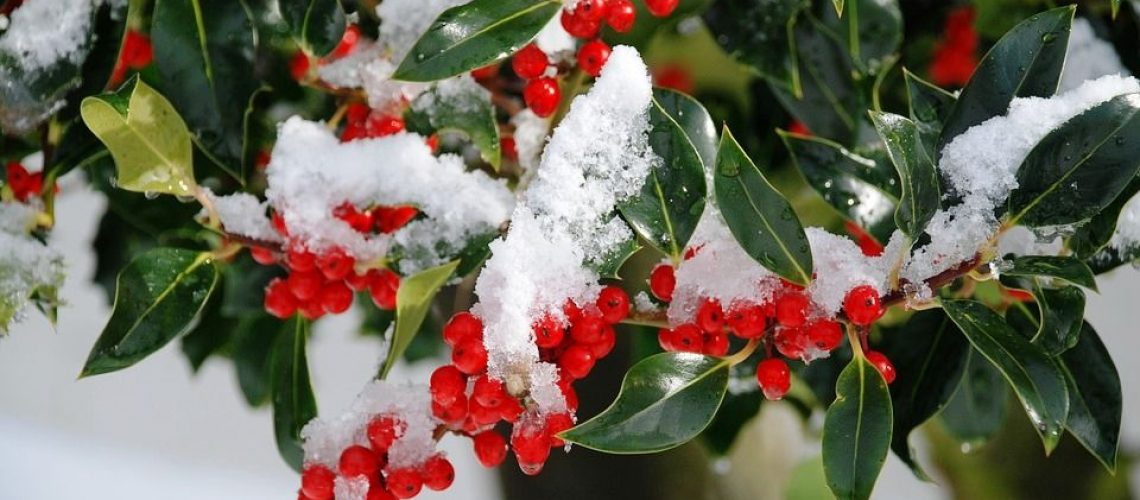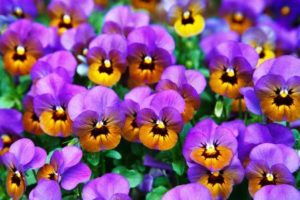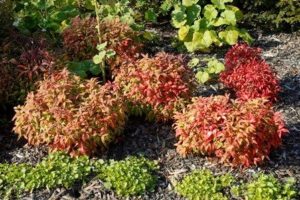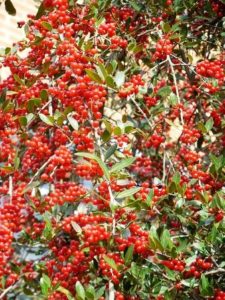
solvida
Winter Plants for North Texas
As the cooler winter temperatures set the scene for dormancy among the majority of plants, a few special plants come alive during the cold season, providing you with blooms, berries and dynamic foliage. There is actually quite a long list of suitable winter plants for North Texas. We have featured three that really put on a great show and will thrive in the far North Dallas suburbs.

Garden Pansy
The garden pansy is an annual and one of the only sources of colorful blooms during the winter months. They are readily available at all nurseries beginning in October and can be found in most every color. They will bloom continuously for you well into the spring. The flower is approximately 5-8 centimeters (2-3 inches) and typically has 5 overlapping petals. The garden pansy can be found in solid colors but also with color variations bursting from the flower’s center. The plant itself can grow to be 23 centimeters (9 inches). They can be grown in a pot or a garden bed with well-drained soil. One word of caution for many of you in the Prosper, TX area where rabbits abound…rabbits love to eat them. Rabbits consider the blooms something of a holiday treat and will feast on all of your beautiful blooms. In order to protect your flower from the hungry rabbits, we would recommend using an organic product called “Rabbit Scram”. This is available at any local hardware store or nursery and should be applied directly to the planting area upon installation and continuously applied throughout the winter months.

Nandina Shrub
We have selected the nandina as one of our special winter plants for North Texas because of the dynamic foliage transformation. Also known as heavenly bamboo or sacred bamboo, nandina comes in many varieties all native to eastern Asia. In spite of the name, nandina is not actually a bamboo plant but rather a shrub. Other than the nandina domestica which can grow to 7 ft tall and 5 ft wide, the majority of nandinas are low-growing shrubs, ranging from 1.5 ft tall/wide to 3 ft tall/wide. Nandinas grow with vertical, unbranching shoots and should be pruned at the base of the branch close to the soil line. All nandinas are evergreen in our planting zone, meaning that they do not shed their leaves, so the fall and winter months are an ideal time to plant these shrubs in North Texas. Throughout most of the year, nandinas provide green foliage with some color variation. In the fall and winter months, however, the nandinas foliage will take on a burgundy hue. This foliage transformation becomes one of the few spots of color in a winter garden where most things are bare or green.

Holly Evergreen
Our winter plant list would not be complete without paying tribute to the bright red berries on the holly plant. Holly berries play such an important role in winter gardening that they find their way into our traditional Christmas wreaths and garland. With a genus of approximately 480 species of flowering plants, the holly is one of the most widely recognized plants in all of horticulture. The holly offers varieties of small shrubs (like the Carissa holly) to large shrubs (Nellie Stevens holly) and trees (Yaupon holly). The berries are not only beautiful to behold, they also provide a winter snack for the birds. The majority of hollies in our north Texas are evergreen, so in addition to the display of winter berries, they offer dark green foliage throughout the year. The holly is also one of our most flexible shrubs and can survive in both shade and sun.
Again, as most of the plants in our gardens are looking for a long winter’s rest, consider incorporating some special plants to keep a bright spot in your garden during the cold season. Your garden will come alive this winter with the Garden Pansy for bright and colorful blooms, Nandina for dynamic foliage and Holly for the berries.